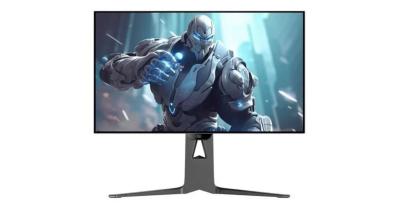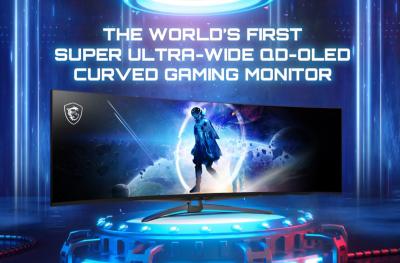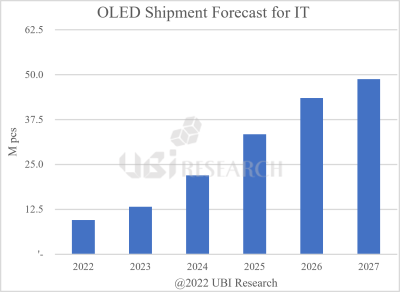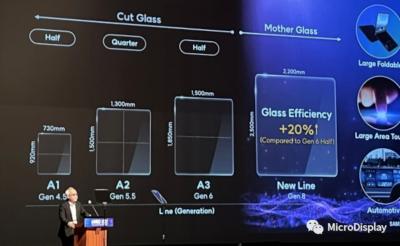OLED (Organic Light Emitting Diode) technology offers bright, efficient and fast displays, outperforming LCD display. OLEDs deliver the best picture quality ever and are used in many devices, from smartwatches through smartphones and tablets to TVs and more.
OLEDs are also used to enable high-end monitors that offer excellent contrast, image quality, colors and new form factors. This article will explain the benefits, the current status and the future of OLED monitors.
OLED monitors vs LCD monitors
- OLED provide a better image quality with a much higher contrast (true blacks), wide color gamut, better viewing angles and a much faster refresh rate (great for gaming!)
- OLED panels are much thinner and lighter compared to LCD panels
- OLED monitors consume less power - as only lit pixels draw energy on OLED displays
- An OLED monitor can be flexible, bendable, rollable - and transparent
OLED monitors and the burn-in challenge?
Of course OLED technology is not perfect. One of the major drawbacks of an OLED display is image retention / burn-in. In an OLED display each pixel is driven independently and each pixel ages differently - and as brightness is reduced with use (the lifetime of OLED materials is limited), we have burn-in problems.
For mobile phones and TVs this is less of a problem - but in a computer user interface many UI elements are quite fixed (toolbars, icons, etc) which means that burn-in is a real problem. There are some technologies to handle this problem - for example by measurement and compensation, or by adopting a tandem architecture to increase the lifetime. In addition user-interface designers can design a user interface that will be more suited for OLED displays.
OLED monitors on the market
OLED technology is very popular in smartphones, wearables and TVs - and in recent years OLED monitors has entered the market as display makers now target this market, starting with high-end models aimed towards gaming and content creation.
Display makers LG Display, Samsung Display and others target premium applications and mostly produce OLED panels in the range of 27-inch to 42-inch. One example of an OLED monitor is the ViewSonic VX2776-2K-OLED, based on a 26.5" 1000 nits (HDR) 2560x1440 240Hz 0.03 ms G2G VRR WOLED display (made by LGD).
Asus has several OLED monitors. The PG32UCDM and PG34WCDM are two gaming monitors, each based on a different OLED panel technology. The PG32UCDM uses a 32" 4K (3840x2160, 16:9) 240Hz VRR 1000 nits (HDR peak) QD-OLED panel, produced by Samsung Display. The PG34WCDM monitor, on the other hand is based on a 34" 3440x1440 (21:9) 240Hz VRR 1300 nits (HDR peak) MLA (microlens) WOLED curved (800R) panel, produced by LG Display.
Samsung has its own high-end OLED monitor, the Odyssey OLED G95SC. This is an ultra-wide gaming monitor based on a 49-inch 5120x1440 resolution, 240Hz, 1800R curved QD-OLED panel. The G95SC is now shipping, for around $2,000. LG also offers OLED monitors, including the UltraGear 27GR95QE-B a gaming monitor with a 27" 2560x1440 240Hz 0.3ms (GtG) response time OLED display. The 27" UltraGear OLED monitor is now shipping for around $850.
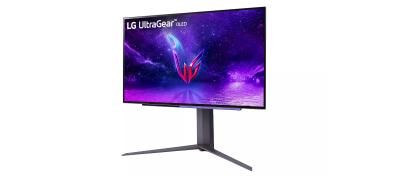
Click here for our comprehensive list of OLED monitors.
Further reading
LGD starts producing 27" and 45" 240Hz WOLED panels for gaming monitors
LG Display announced that it is starting to produce 27" and 45" 240Hz WOLED panels, optimized for gaming applications. The 45" panel is an ultra-wide 3440x1440 (WQHD) curved one.
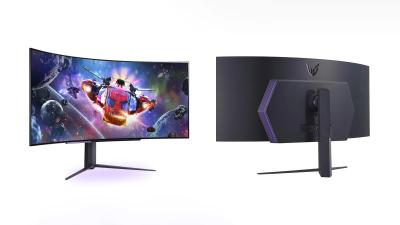
LG Electronics already unveiled monitors based on these panels last month, the Ultragear 27GR95QE-B and 45GR95QE. LGE did not say when these monitors will ship, but it will likely happen soon if LGD is already producing the panels. Other companies, including Asus and Corsair have also developed monitors based on these panels.
MSI shows a 240Hz QD-OLED Monitor slated for early 2023
MSI unveiled an upcoming monitor, a QD-OLED super ultra-wide curved display, that will offer a 240Hz herz. MSI did not disclose anything else - beyond saying that the current name is Project 491C.
This is the first time we publicly hear of a 240Hz QD-OLED display. Samsung currently produces a single monitor QD-OLED panel, a 34-inch curved 175Hz 3440x1440 display.
UBI: Samsung Display to produce QD-OLED monitor panels at its upcoming 8.7-Gen A5 line, targeting Apple as its main customer
According to UBI Research, Samsung Display has decided to produce QD-OLED panels at its upcoming 8.7-Gen A5 production line. The company IT display strategy will be to produce QD-OLED panels for monitor application (27-inch displays, at first) and tandem RGB panels for smaller IT displays (tablets, laptops).
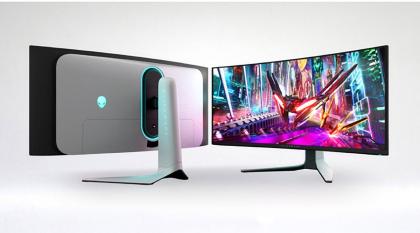
A 34-inch QD-OLED monitor (Dell Alienware)
Samsung is looking for design wins with Apple for both its display architectures - the larger QD-OLED panels for Apple's monitors and the smaller sized panels for its tablets.
UBI: the OLED for IT market is set to grow from 9.5 million units in 2022 to 48.8 million units in 2027
UBI Research estimates hat shipments of OLED panels for IT applications (tablets, monitors and laptops) will reach 48.8 million units by 2027, growing from around 9.5 million units in 2022 (a CAGR of 39%).
In 2022-2024, the main application for OLED panels is in laptops, but this will change from 2025 and onwards as tablets will also become a dominant applications (as Apple will start adoping OLEDs in its high-end iPads).
LG Display received a Perfect Black verification for its OLED TV and monitor displays from UL Solutions
LG Display announced that its OLED TV and monitor panels has been recognized as having a perfect black level in any environment, from UL Solutions. The company received the new verification for its panels ranging from 42-inch to 97-inch.
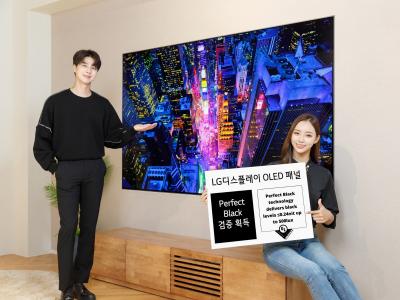
LGD says that it is the only company that has been recognized in this verification for TV and monitor panels.
LG Display to start producing mid-size WOLED panels as demand for TVs declines
According to reports, LG Display will start producing mid-sized W-OLED panels, as it is concerned that demand for TV panels is on the decline.
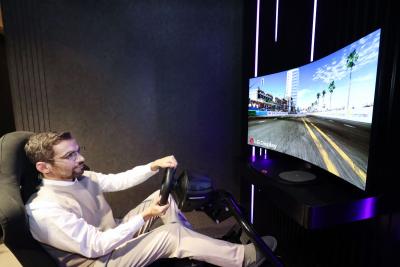
LGD will start producing 27-inch WOLED panels as early as by the end of October, targeting small TVs and gaming monitors. LGE will be LGD's first customer, and it plans to release its 27-inch OLED display in Q1 2023.
LGE to start shipping its 42" bendable OLED monitor/TV next month for $2,999
Last month LG announced its first bendable OLED monitor/TV, the OLED Flex LX3. The company now announced that it will start shipping it next month, for $2,999.
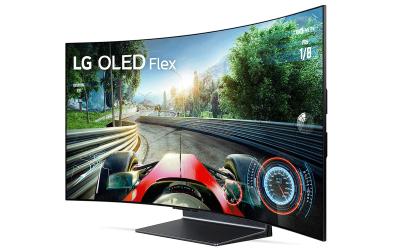
LG's OLED Flex LX3 is a bendable OLED monitor/TV that features a flexible 42" 4K 120Hz WOLED panel that can change from a flat shape to a 900R curved one (with twenty levels of possible curvature settings). Other features include D0lby Atmos, two 40W speakers, HDMI 2.1, VRR, ALLM and G-SYNC and AMD FreeSync support.
DSCC: large-area OLED equipment sales to drop to zero in 2023, but resume in 2024 mostly for CSoT's inkjet printing panels
DSCC says that spending on equipment for the production of large area OLED panels (used in TVs and monitors) have decreased from $3 billion in 2019 to $2.05 billion in 2020, $1.47 billion in 2021 and will drop further to $1.42 billion in 2022.
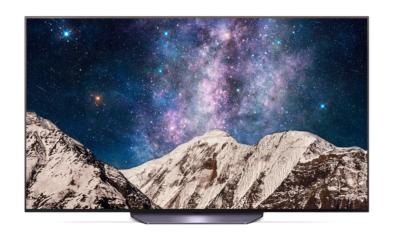
DSCC estimates that in 2023, the spending on such equipment will be zero. But OLED producers will resume buying large OLED equipment in 2024. Spending in 2024 will amount $2.01 billion, and in 2025 - $1.51 billion.
Samsung Display reportedly decided to use 8.7-Gen glass substrates in its upcoming IT OLED fab
OLED makers are gearing up to increase production of IT OLED panels, used in laptops, monitors and tablets. Towards that, analysts expects over 10 8.5-Gen OLED lines under consideration now in the industry. This drive is led by Samsung Display that confirmed is is building a 8-Gen (2200x2500 mm) OLED production line, that will begin production in 2024.
A 8-Gen (or actually 8.5-Gen) fab uses 2200x2500mm glass substrates. According to a new report in Korea, Samsung actually decided to adopt a larger glass - a 8.7-Gen 2290x2620 mm. The ~10cm increase will increase production efficiency by around 9%, but this means that current 8.5-Gen LCD equipment that Samsung hoped to use will not be usable any more.
RAPT develops unique touch solutions for OLED monitors and signage displays
The COVID-19 pandemic created an increased demand for high quality IT solutions, including monitors and collaborative tools, which prompted OLED display makers to start offering solutions for this market for applications like computer monitors, signage and more.
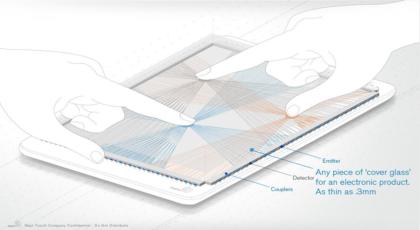
OLED displays that are 20-inch or more suffer from incompatibility with standard capacitive touch, because the thin OLED panel results in large parasitic capacitive coupling with the touch surface. The dynamic driving of OLEDs (where only lit pixels draw current) further reduces the capacitive touch performance by introducing unpredictable “display pattern noiseâ€. These issues are easily mitigated in small area displays, but as OLEDs increase in size, the performance and costs of capacitive solutions suffer.
Pagination
- Previous page
- Page 4
- Next page
